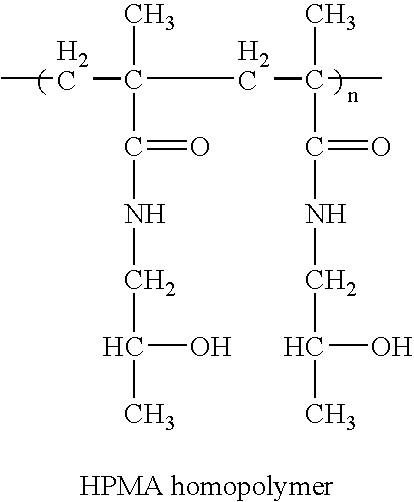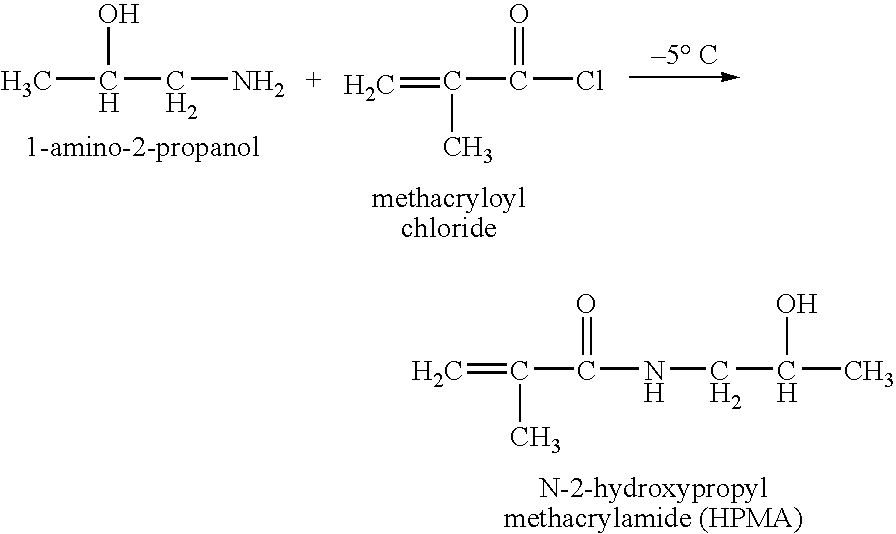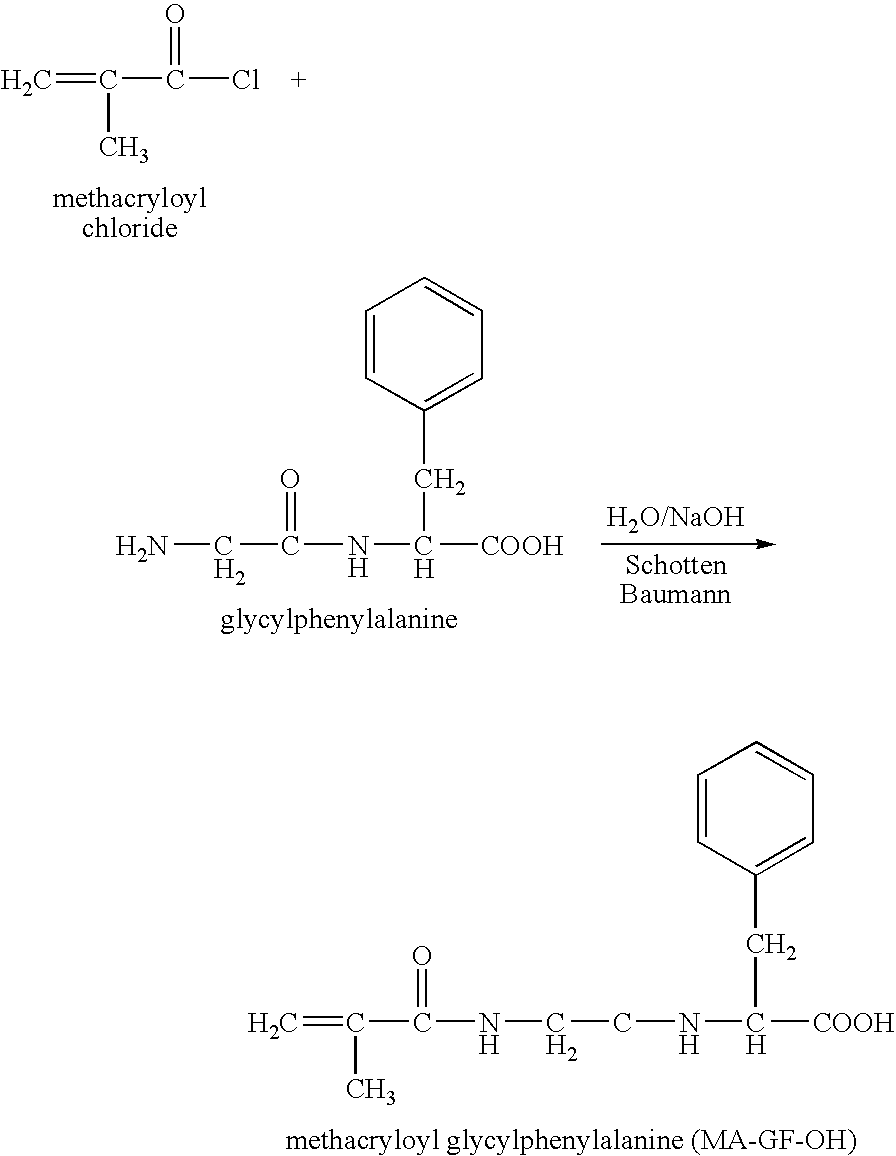Hpma-polyamine conjugates and uses therefore
a technology of hpma and polyamine, which is applied in the direction of gastrin/cholecystokinin, drug composition, peptide, etc., can solve the problems of inactivation and excretion, long time-consuming and laborious, and increase the difficulty of gene delivery in therapeutic applications, so as to optimize the immune response
- Summary
- Abstract
- Description
- Claims
- Application Information
AI Technical Summary
Benefits of technology
Problems solved by technology
Method used
Image
Examples
example a1
Synthesis of HPMA Polyamine Conjugates for Gene Delivery
[0088] HPMA polyamine conjugates will be synthesized by the polymerization, of HPMA monomer and an activated MA-GFLG comonomer at different molar ratios followed by reaction with the amino function of the polyamine molecule.
[0089] Synthesis of Polymeric Co-Monomers
[0090] Synthesis of the reactive comonomer HPMA was as previously described (Kopecek and Bazilova, 1973). The synthesis of the MA-GFLG-ONp monomer was a modified multistep procedure (Kopecek et al., 1985). First MA-Gly-Phe and Leu-Gly-OMe.HCl were synthesized separately. Subsequently the two dipeptides were coupled to yield MA-GFLG-OMe. The methyl-group was removed with base giving MA-GFLG-OH and to this compound the reactive group p-nitrophenol was attached by esterification.
[0091] Synthesis of HPMA
[0092] To a solution of 1-amino-2-propanol (65.6 ml, 0.84 mol) in 250 ml of acetonitrile, freshly distilled methacryloyl chloride (MACl) (41 ml, 0.42 mol) in 20 ml o...
example a3
Preparation of Lipoplexes containing DNA and HPMA-Conjugated Polyamine:
[0129] Forty microgram of pCILuc will be dissolved in 100 μl of aqueous phase, in one instance 10% glucose, and mixed by hand with an aqueous solution prepared with a mixture of HPMA-conjugated polyamine and an aqueous dispersion of cationic lipids in a final volume of 100 μl aqueous phase, in one instance distilled H2O. In this instance, the final concentration of glucose will be 5%. The concentration and ratio of the HPMA-conjugated polyamine and the cationic lipids will be varied. The mixing will be performed by adding the DNA solution to the lipid solution. The charge ratio of amine to DNA in this mixture will be varied by variation in the amounts of the lipids and HPMA-conjugated polyamine.
example a4
Preparation of Ligand-Targeted Complexes Containing DNA and HPMA-Conjugated Polyamine:
[0130] Peptide K14RGD containing the amino acid sequence: KKK KKK KKK KKK KKS CRG DC, peptide K14SMT containing the amino acid sequence: KKK KKK KKK KKK KKA d-FCY d-WKT CT, and peptide K14MST containing the amino acid sequence KKK KKK KKK KKK KKA TDC RGE CF with at least 90% purity will be synthesized by solid phase synthesis. Peptides will be oxidized to make circularized peptide.
[0131] Complexes will be prepared as above except that varying amounts of ligand peptides will be mixed with polyamine. The mixture will be added to serum free medium containing pCIluc2 DNA. The complex will be incubated for 30 min before adding to the cells. 20000 HUVEC cells will be seeded to each well of a 96 well plate and cultured for 12 hr before transfection. The transfection solution will be removed after 3 hr and serum-containing medium added to the cells.
[0132] The results will show increased expression by ad...
PUM
| Property | Measurement | Unit |
|---|---|---|
| Fraction | aaaaa | aaaaa |
| Fraction | aaaaa | aaaaa |
| Molar mass | aaaaa | aaaaa |
Abstract
Description
Claims
Application Information
 Login to View More
Login to View More - R&D
- Intellectual Property
- Life Sciences
- Materials
- Tech Scout
- Unparalleled Data Quality
- Higher Quality Content
- 60% Fewer Hallucinations
Browse by: Latest US Patents, China's latest patents, Technical Efficacy Thesaurus, Application Domain, Technology Topic, Popular Technical Reports.
© 2025 PatSnap. All rights reserved.Legal|Privacy policy|Modern Slavery Act Transparency Statement|Sitemap|About US| Contact US: help@patsnap.com



